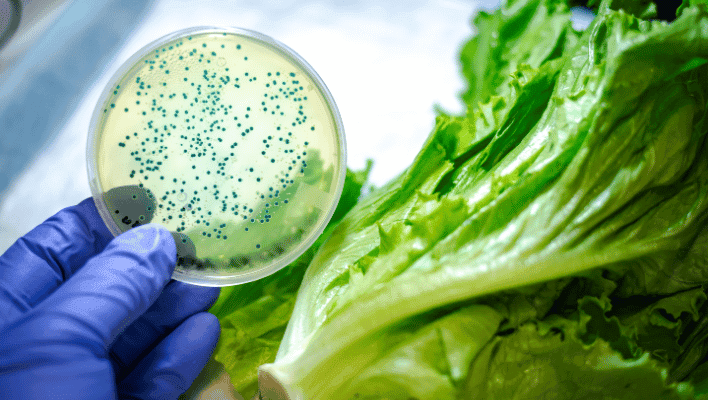Step 2: Antimicrobial Drug Resistance in Poultry Production: Current Status and Innovative Strategies for Bacterial Control
Introduction
Understanding Antimicrobial Drug Resistance
When bacteria are able to resist the effects of antimicrobial medications, they are unable to treat bacterial infections. This is referred to as antimicrobial drug resistance. An overview of the mechanisms and elements influencing the emergence and dissemination of drug resistance is given in this section.

Table of Contents
Prevalence of Antimicrobial Drug Resistance in Poultry Production
The prevalence of antimicrobial drug resistance differs between geographical areas and types of poultry production. This section explores the most recent findings and statistics on the prevalence of drug resistance, highlighting the particular bacteria and medications at issue. Additionally, it looks at how homeopathy can help with poultry antibiotic resistance.
Antibiotic Usage in Poultry Production
Drug resistance is significantly influenced by the usage of antibiotics in the production of poultry. This section examines the many justifications for using antibiotics, such as disease prevention and growth enhancement. The effects of antibiotic residues in poultry products and how they might contribute to drug resistance are also covered. It also looks at how homeopathy can offer a substitute for the use of antibiotics.
Mechanisms of Drug Resistance in Poultry Bacteria
Different strategies are used by bacteria to fend off the effects of antimicrobial medications. This section explores the molecular processes, such as mutation, horizontal gene transfer, and biofilm development, that allow bacteria to develop resistance. For the purpose of creating efficient control measures, including the use of homeopathy, understanding these systems is essential..
Consequences of Antimicrobial Drug Resistance in Poultry
Resistance to antibiotics has effects that go beyond the poultry business. The possibility for the transmission of drug-resistant microorganisms from poultry to humans is highlighted as this part investigates the effects of drug resistance on human health and the economy. It also addresses how homeopathy may help to lessen these effects.
Impact on Human Health
Antibiotic-resistant microorganisms found in chicken can seriously endanger human health. The possible effects are examined in this section, including the tougher it will be to treat infections, the greater mortality rates, and the potential rise of multidrug-resistant microorganisms. It also emphasizes the function of homeopathy in the management of bacterial illnesses.
Table: Bacterial Antimicrobial Resistance (AMR) Mechanisms and Associated Impact
| Resistance Mechanism | Description |
|---|---|
| Increased Drug Efflux | Bacteria pump out drugs to avoid intracellular buildup. |
| Decreased Drug Uptake | Reduced drug entry into bacteria. |
| Drug Modification/Destruction | Alteration or degradation of drugs by bacterial enzymes. |
| Target Modification | Changes in drug targets to evade their effects. |
Bacterial AMR Impact in 2019: Deaths and DALYs
| Statistic | Value |
|---|---|
| Estimated Deaths | 4.95 million (3.62-6.57 million) |
| Deaths Attributable to Bacterial AMR | 1.27 million (95% UI 0.911-1.71 million) |
| Highest Death Rate Region | Western Sub-Saharan Africa: 27.3/100,000 |
| Lowest Death Rate Region | Australasia: 6.5/100,000 |
| Most Burdensome Syndrome | Lower Respiratory Infections (>1.5 million) |
Leading Pathogens for Deaths Associated with Resistance (2019)
| Pathogen | Deaths Attributable to AMR | Deaths Associated with AMR |
|---|---|---|
| Escherichia coli | 929,000 (660,000-1,270,000) | 3.57 million (2.62-4.78 million) |
| Staphylococcus aureus | ||
| Klebsiella pneumoniae | ||
| Streptococcus pneumoniae | ||
| Acinetobacter baumannii | ||
| Pseudomonas aeruginosa |
Pathogen-Drug Combinations with High AMR Impact (2019)
| Pathogen-Drug Combination | Deaths Attributable to AMR |
|---|---|
| Meticillin-Resistant S aureus | >100,000 |
| Multidrug-Resistant Tuberculosis | 50,000-100,000 |
| Third-Generation Cephalosporin-Resistant E coli | 50,000-100,000 |
| Carbapenem-Resistant A baumannii | 50,000-100,000 |
| Fluoroquinolone-Resistant E coli | 50,000-100,000 |
| Carbapenem-Resistant K pneumoniae | 50,000-100,000 |
| Third-Generation Cephalosporin-Resistant K pneumoniae | 50,000-100,000 |
Note: The table provides a summary of antimicrobial resistance mechanisms, bacterial AMR impact in terms of deaths and DALYs, leading pathogens, and pathogen-drug combinations with significant AMR-related deaths in 2019. These estimates underscore the global health burden posed by bacterial AMR and emphasize the importance of addressing and mitigating antimicrobial resistance.
Economic Consequences
Resistance to antibiotics has financial repercussions for both society at large and the poultry business. The economic effects of diminished access to effective antibiotics, rising healthcare costs, and decreased productivity are covered in this subsection. It looks at how homeopathy can provide economical antibacterial remedies..
Innovative Strategies for Bacterial Control
Innovative tactics are necessary to effectively tackle antimicrobial medication resistance. In this section, a variety of strategies are examined, including alternatives to the use of antibiotics, immunization campaigns, probiotics and prebiotics, improved biosecurity measures, genetic selection and breeding tactics, surveillance and monitoring programs, education and training initiatives, regulatory measures, and stakeholder collaboration. It emphasizes how these tactics can be made more effective by including homeopathy into them.
The Role of Homeopathy in Bacterial Control
Potential remedies for bacterial management in chicken production are offered by homeopathy, a systemic approach to healing. The usefulness of homeopathy in treating bacterial infections without promoting medication resistance is emphasized as this part digs into the homeopathic principles and mechanisms. The use of homeopathy as an antibiotic substitute in chickens is examined through case studies and research.
Alternatives to Antibiotic Usage
Utilizing fewer antibiotics is essential for preventing drug resistance. Alternative methods are covered in this section, including bacteriophages, essential oils, organic acids, and botanicals. It investigates their effectiveness, security, and prospective fusion with homeopathic remedies.
Vaccination Programs
Vaccination programs are essential for preventing bacterial infections in poultry. This subsection explores the role of vaccinations in reducing the need for antibiotics, enhancing flock health, and controlling the spread of drug-resistant bacteria. It also highlights how homeopathy can complement vaccination strategies.
Probiotics and Prebiotics
Programs for vaccination are crucial in reducing bacterial illnesses in poultry. The use of immunizations to lessen the need for antibiotics, improve flock health, and stop the spread of bacteria that are resistant to antibiotics is examined in this subsection. Additionally, it emphasizes how homoeopathy can support immunization plans.
Enhancing Biosecurity Measures
For the introduction and spread of bacterial diseases, efficient biosecurity measures are essential. In order to maintain a biosecure environment in poultry operations, this subsection goes through quarantine processes, cleaning and disinfection techniques, pest control, restricted access zones, and other tactics. It looks at incorporating homoeopathy into biosecurity procedures.
Genetic Selection and Breeding Strategies
Breeding practices and genetic selection are intended to increase the resistance of chickens to bacterial diseases. The development of genetic markers for disease resistance and the selective breeding of poultry with enhanced immune responses are discussed in this subsection. It talks about how homoeopathy can support genetic methods to improve bacterial control.
Surveillance and Monitoring
Programs for surveillance and observation are crucial for the early identification and monitoring of drug resistance trends. The significance of monitoring systems in spotting new dangers and enabling preventative steps is emphasized in this subsection. It addresses how homoeopathy can support traditional monitoring techniques and assist in surveillance efforts.
Education and Training Programs
Programs for education and training are essential in spreading the best methods for bacterial control and promoting ethical antibiotic use. This section emphasizes the value of informing poultry farmers, doctors, and other interested parties about antibiotic resistance and cutting-edge tactics. It looks at how homoeopathy can be introduced into curricula for schools.
Regulatory Measures
Regulations are essential for preventing the development of antimicrobial medication resistance. This section looks at the rules and recommendations that are now in place regarding the use of antibiotics in chicken farming. It highlights the significance of upholding laws, encouraging sensible antibiotic use, and encouraging stakeholder compliance. It also looks at homoeopathy-related regulatory issues.
Collaborative Efforts
Collaboration amongst diverse stakeholders is necessary to combat antimicrobial drug resistance. In order to build comprehensive strategies for bacterial control, this part highlights the value of multidisciplinary collaboration, knowledge exchange, and coordinated efforts. It examines how consumers, politicians, poultry farmers, veterinarians, and practitioners of homoeopathy might work together to effectively combat drug resistance.
Frequently Asked Questions (FAQs)
- Q: Can homoeopathy effectively control bacterial infections in poultry?
- A: Yes, homeopathy offers promising results in controlling bacterial infections in poultry without contributing to drug resistance. It works holistically to support the immune system and promote overall health.
- Q: How does homoeopathy differ from conventional antibiotic treatment?
- A: Homeopathy treats individuals based on their unique symptoms and constitution, stimulating the body’s healing mechanisms. Unlike antibiotics, homoeopathic remedies do not directly target bacteria but support the body’s ability to fight infections naturally.
- Q: Are there any scientific studies supporting the efficacy of homoeopathy in poultry production?
- A: Yes, several studies have demonstrated the positive effects of homoeopathy in improving poultry health, reducing bacterial infections, and enhancing production performance.
- Q: Can homoeopathy be used alongside conventional antibiotics? A: Homeopathy can complement conventional treatments, potentially reducing the reliance on antibiotics and supporting the body’s healing processes. However, it’s essential to consult with a qualified homoeopathic veterinarian or practitioner for appropriate integration.
- Q: Is homoeopathy safe for poultry? A: Homeopathic remedies are generally safe for poultry when prescribed correctly. They have no withdrawal periods and do not contribute to antibiotic residues in poultry products.
Conclusion
Antimicrobial drug resistance in poultry production is a significant concern, but innovative strategies for bacterial control offer hope. This article has explored the current status of drug resistance, highlighted the role of homoeopathy in bacterial control, and discussed various approaches for reducing antibiotic usage. By integrating homoeopathy into comprehensive strategies, we can effectively combat drug resistance while promoting sustainable and healthy poultry production.

